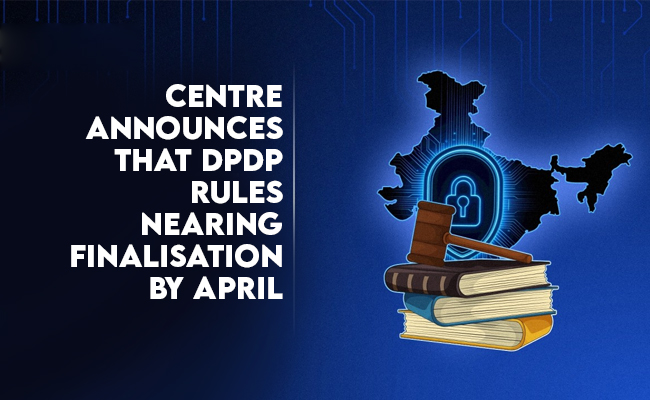New flaw in Zoom allows fraudsters to breach into networks
By MYBRANDBOOK

The latest Zoom flaw could have allowed attackers to mimic an organization, tricking its employees or business partners into revealing personal or other confidential information using social engineering tricks. In a report shared, researchers at cybersecurity firm CheckPoint disclosed details of a minor but easy-to-exploit flaw they reported in Zoom, the highly popular and widely used video conferencing software.
We know, social engineering attacks may sound a bit boring, but someone used the same to put Twitter on fire just last night when hundreds of high-profile Twitter accounts were hacked to promote a cryptocurrency scam, all thanks to an employee's compromised internal tooling account.
The said vulnerability resides in Zoom's customizable URL feature dubbed Vanity URL, aiming to let companies create a custom URL on its subdomain and branded landing page.
Cyber security team found that due to improper account validation, any meeting ID could have been launched using any organization's Vanity URL, even if a meeting was set up by a separate individual account.
"The security issue is focused on the sub-domain functionalities," the researchers said. "There are several ways to enter a meeting containing a sub-domain, including using a direct sub-domain link containing the meeting ID, or using the organization's customized sub-domain web UI."
Attackers can exploit this loophole in two ways:
Attack via direct links: A hacker can change the invitation URL, when setting up a meeting. A user receiving this invitation link may fall under the attacker's trap, thinking that the invitation was genuine and issued from a real organization.
Attacking dedicated Zoom web interfaces: Since some organizations have their Zoom web interface for conference calls, a hacker could also target such an interface and attempt to redirect a user to enter a meeting ID into the malicious Vanity URL rather than the actual Zoom web interface and join the relevant Zoom session.
The impact of this issue can lead to a successful phishing attempt, allowing the attackers to pose as a legit employee of the company, which potentially enables them to steal credentials and sensitive information and carry out other fraud actions.
Cyber Security researchers responsibly disclosed the issue to Zoom Video Communications Inc. and worked together to address it and put additional safeguards in place for the protection of users.
"Because Zoom has become one of the world's leading communication channels for businesses, governments and consumers, it's critical that threat actors are prevented from exploiting Zoom for criminal purposes," Adi Ikan, Group Manager at Check Point Research, told the press.
"Working together with Zoom's security team, we have helped Zoom provide users globally with a safer, simpler and trusted communication experience so they can take full advantage of the service's benefits."
Earlier this year, the Security Research team also worked with Zoom to patch a severe privacy bug that could have allowed uninvited people to join private meetings and remotely eavesdrop on private audio, video, and documents shared throughout the session.
Due to the ongoing coronavirus outbreak, the usage of Zoom video conferencing software has skyrocketed from 10 million daily meeting participants back in December 2019 to more than 300 million in April 2020, making it a favourite target of cybercriminals.
Just last week, Zoom patched a zero-day vulnerability in all supported versions of the Zoom client for Windows that could have allowed an attacker to execute arbitrary code on a victim's computer running Microsoft Windows 7 or older.
Last month, Zoom addressed two critical security vulnerabilities in its video conferencing software for Windows, macOS, or Linux computers that could have allowed attackers to hack into the systems of group chat participants or an individual recipient remotely.
In April, a series of issues were uncovered and reported in Zoom, which raised privacy and security concerns surrounding the video conferencing software among millions of its users.


Legal Battle Over IT Act Intensifies Amid Musk’s India Plans
The outcome of the legal dispute between X Corp and the Indian government c...

Wipro inks 10-year deal with Phoenix Group's ReAssure UK worth
The agreement, executed through Wipro and its 100% subsidiary,...

Centre announces that DPDP Rules nearing Finalisation by April
The government seeks to refine the rules for robust data protection, ensuri...

Home Ministry cracks down on PoS agents in digital arrest scam
Digital arrest scams are a growing cybercrime where victims are coerced or ...


Icons Of India : Anil Kumar Lahoti
Anil Kumar Lahoti, Chairman, Telecom Regulatory Authority of India (TR...

Icons Of India : Bhavish Aggarwal
Indian entrepreneur Bhavish Aggarwal is the CEO of Ola, India’s larg...

Icons Of India : Kumar Mangalam Birla
Aditya Birla Group chairman Kumar Mangalam Birla recently made a comeb...


GSTN - Goods and Services Tax Network
GSTN provides shared IT infrastructure and service to both central and...

CSC - Common Service Centres
CSC initiative in India is a strategic cornerstone of the Digital Indi...

ITI - ITI Limited
ITI Limited is a leading provider of telecommunications equipment, sol...


Indian Tech Talent Excelling The Tech World - Lal Karsanbhai, President & CEO, Emerson
Lal Karsanbhai, President and CEO of Emerson, assumed the leadership i...

Indian Tech Talent Excelling The Tech World - Anirudh Devgan , President, Cadence Design
Anirudh Devgan, the Global President and CEO of Cadence Design Systems...

Indian Tech Talent Excelling The Tech World - ARVIND KRISHNA, CEO – IBM
Arvind Krishna, an Indian-American business executive, serves as the C...
 of images belongs to the respective copyright holders
of images belongs to the respective copyright holders